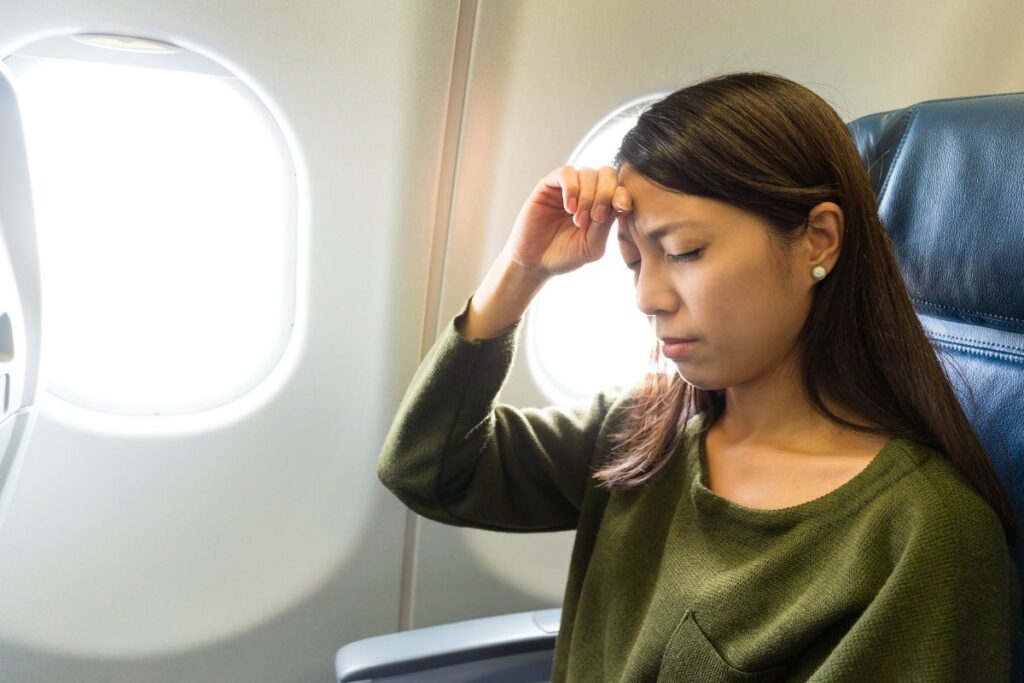Have you ever boarded a plane and suddenly felt a severe headache that just wouldn’t go away? It could be more than just a simple headache; it could be a sign of a condition that’s worsened by the pressure changes during a flight. If you’ve been experiencing these headaches frequently, it’s time to understand the cause, potential risks, and how to prevent future episodes.
What is an Aeroplane headache?
Aeroplane headaches, also known as altitude-induced headaches, occur when flying due to air pressure and altitude changes. Sinuses may expand or shrink as air pressure drops, resulting in severe throbbing pain. It can be a nightmare for some people, and if it happens often, you should get your sinuses, ears, or even blood vessels checked.
Symptoms of Aeroplane Headaches:
Pay attention to these symptoms if you’re prone to headaches while flying:
● Throbbing headache: pain that worsens with altitude changes, typically when the plane ascends or descends.
● Pressure in the head or sinuses: A feeling of fullness or blocked sinuses, especially in the frontal or maxillary regions.
● Nausea or dizziness: Some individuals experience nausea, dizziness, and headaches due to pressure changes.
● Ear pain or popping: Changes in pressure can affect your ears and sinuses, causing discomfort or a feeling of blockage.
Red Flags:
● Frequent headaches that occur only while flying
● Headaches accompanied by visual disturbances or nausea
● Pain that persists after the flight is over
How Doctors Will Approach Aeroplane Headache
An ENT specialist will start by reviewing your medical history and asking about the frequency and intensity of your headaches. They may then perform a sinus exam to check for any blockages or inflammation in the sinuses. They can ask you to get a CT scan or MRI if they observe something serious, such as Sinusitis or vascular issue.
Treatment Options for Aeroplane Headache
● Decongestants: medications that help open up blocked sinuses and relieve pressure in the head.
● Painkillers: Acetaminophen or ibuprofen can help reduce pain when flying.
● Nasal sprays: Saline or steroid-based sprays can help relieve pressure and lessen sinus inflammation.
● Hydration: Drink lots of water before and during the flight to avoid dehydration so that there is no headache due to it.
FAQ :
Is aeroplane headache common?
Yes, many people can experience headaches while flying as air pressure changes. However, if it’s happening again and again or it’s severe, consult a doctor.
Can aeroplane headaches be prevented?
While you can’t control air pressure changes, staying hydrated, using decongestants, and taking pain relievers before or during the flight can help prevent or reduce the intensity of the headaches.
Could my aeroplane headache be something more serious?
If your headache is accompanied by nausea, dizziness, or visual changes, or if it persists after the flight, it’s important to see a doctor to rule out other conditions.
How can I treat aeroplane headaches during my flight?
Taking over-the-counter pain medications, using nasal decongestants, or sipping water regularly can help alleviate symptoms during the flight.
How HealthPil Can Help:
Recurrent airplane headaches can be diagnosed and treated with a team of skilled ENT doctors that HealthPil connects you with. If you regularly have headaches when flying, schedule a consultation with HealthPil to receive tailored guidance on managing and avoiding the issue.
Disclaimer:
This article here is solely for informational purposes and should not replace professional medical advice. Always consult an ENT specialist for a proper diagnosis and treatment plan if you experience recurrent headaches or other symptoms. HealthPil connects you with trusted doctors for consultations and treatments.

